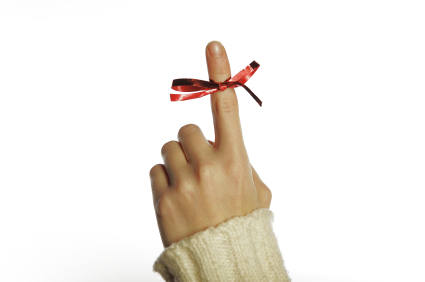I have many pet peeves in my life. Because I am a scientific editor, many of my pet peeves revolve around abuse of the English language. The abuse that set me off most recently is the misuse of the word “theory”. These days everyone has a theory about something. For example I have a “theory” as to why I gained five pounds over the holidays: Too much rich food and egg nog! However, from a scientific standpoint, saying “I have a theory as to why I gained five pounds over the holidays” is not a proper use of the word theory. While it is likely that the food and egg nog contributed to the weight gain, I do not have a theory. The cause of the weight gain has not been scientifically scrutinized and put through rigorous testing. There isn’t a pile of scientific evidence to support my statement. What I have is a sound working hypothesis, not a theory.
Continue reading “A Scientist’s Rant about the Word “Theory””General
Catnip and Its Effect on Cats, Dogs and Humans

Cat owners—and those that care about cats—know the power that catnip has on cats. If you own a cat and bring catnip into the house, no matter where you put it, the cat will find it.
Once the cat gets the catnip (aka catmint, nepeta) she/he will rub her/his head and shoulders on the plant, lie down on it or even dash about the house. Cats frequently chew on and eat catnip.
A report sought to explain why and how catmint affects cats. I eagerly read the report, having always been conflicted about giving catnip to my cats. Could they be killing brain cells by smelling or consuming catnip? Is it habit forming? Is catnip a gateway drug for cats? Continue reading “Catnip and Its Effect on Cats, Dogs and Humans”
Surviving the Job Hunt
 So you’re looking for a job. Maybe you’ve been laid off, downsized, fired, or just finished school. The hunt is now on to find gainful and hopefully meaningful employment. There’s no way around it. Being unemployed is no fun. Trust me, I’ve been there – more than once!
So you’re looking for a job. Maybe you’ve been laid off, downsized, fired, or just finished school. The hunt is now on to find gainful and hopefully meaningful employment. There’s no way around it. Being unemployed is no fun. Trust me, I’ve been there – more than once!
My first job casualty came after the combined bubble burst of 2000 and 9/11. This bout of unemployment was the longest and the most devastating. I had never been out of work, a day in my life. I was crushed and didn’t know what to do with myself. In the beginning I would spend all day every day looking for a job. I wrote and rewrote my resume, agonizing over every word. Don’t even get me started on versions of my cover letter. Somehow I thought that if I had everything just perfect, I would at least get an interview. I would spend hours combing the different job boards, looking at different company websites, emailing people I knew, and yes (at the time) still checking the Sunday paper. Not only did these efforts leave me exhausted and frustrated, I didn’t get any interviews.
I quickly learned that in order to be successful I had to structure my day more efficiently, take better care of myself, and have some fun. So after you’ve written your resume and had it reviewed (preferably by a colleague or a recruiter in your industry) here are a couple things you can do to keep your sanity and hopefully find a job. Continue reading “Surviving the Job Hunt”
Remembering Not to Forget
 Forgetting. Forgetting your address; your spouse; your children; your friends; your life. It is something that none of us want to think about, but it hangs over some of us like a specter. Can’t remember if you fed the cat? Where you put your car keys? Did you forget to pack your lunch or return a phone call? Maybe you are trying to do too many things at once, or maybe you are tired. There are lots of perfectly normal reasons why we all forget things from time to time, but every time I forget something there is a nagging voice in my head saying, “Maybe it is something else.” Continue reading “Remembering Not to Forget”
Forgetting. Forgetting your address; your spouse; your children; your friends; your life. It is something that none of us want to think about, but it hangs over some of us like a specter. Can’t remember if you fed the cat? Where you put your car keys? Did you forget to pack your lunch or return a phone call? Maybe you are trying to do too many things at once, or maybe you are tired. There are lots of perfectly normal reasons why we all forget things from time to time, but every time I forget something there is a nagging voice in my head saying, “Maybe it is something else.” Continue reading “Remembering Not to Forget”
The Benefit of a Cold, Dark Walk: Fall Waterfowl Migration in the Central United States
 Driving to work in the morning the past several weeks, there have been occasional large flocks of geese and ducks flying . In the northern U.S. it’s time for the fall waterfowl migration south. In fact, the flock sizes have decreased in the past week, and several online sources concur that waterfowl migration has peaked, in mid December. Continue reading “The Benefit of a Cold, Dark Walk: Fall Waterfowl Migration in the Central United States”
Driving to work in the morning the past several weeks, there have been occasional large flocks of geese and ducks flying . In the northern U.S. it’s time for the fall waterfowl migration south. In fact, the flock sizes have decreased in the past week, and several online sources concur that waterfowl migration has peaked, in mid December. Continue reading “The Benefit of a Cold, Dark Walk: Fall Waterfowl Migration in the Central United States”
Another Application for DNA Testing: Getting the Scoop on Dog Poop
 As a society, we love our pets. In many cases, cats and dogs are our surrogate children. We spoil them with treats, toys and plenty of attention. They reward us with unconditional love (or as some cats seem to think, simply with their presence). However, in addition to the many joys of animal companionship, there are unpleasant effects and responsibilities associated with pet ownership. Cat or dog hair covers our furniture, our favorite sweater and every other possession, whether or not these items come into direct contact with our hairy friend. Some dogs have uncontrollable urges to chase cars or bark incessantly; cats often dispense fur balls randomly around the house or become a pest every time we use the can opener. One of the worst responsibilities, in my opinion, is cleaning up after them. Cats have litter boxes, which must be cleaned periodically, and dogs generate piles of yesterday’s dog food, which must be picked up. A responsible dog owner even carries plastic bags during walks to collect piles that Fido leaves along the way. However, not all pet owners are responsible enough to pick up the offending material, and this is causing problems in many communities. Some property owners are now implementing a high-tech solution to this unsightly problem: DNA testing.
As a society, we love our pets. In many cases, cats and dogs are our surrogate children. We spoil them with treats, toys and plenty of attention. They reward us with unconditional love (or as some cats seem to think, simply with their presence). However, in addition to the many joys of animal companionship, there are unpleasant effects and responsibilities associated with pet ownership. Cat or dog hair covers our furniture, our favorite sweater and every other possession, whether or not these items come into direct contact with our hairy friend. Some dogs have uncontrollable urges to chase cars or bark incessantly; cats often dispense fur balls randomly around the house or become a pest every time we use the can opener. One of the worst responsibilities, in my opinion, is cleaning up after them. Cats have litter boxes, which must be cleaned periodically, and dogs generate piles of yesterday’s dog food, which must be picked up. A responsible dog owner even carries plastic bags during walks to collect piles that Fido leaves along the way. However, not all pet owners are responsible enough to pick up the offending material, and this is causing problems in many communities. Some property owners are now implementing a high-tech solution to this unsightly problem: DNA testing.
Continue reading “Another Application for DNA Testing: Getting the Scoop on Dog Poop”
Seeing the Potential
 I had never heard of Halorubrum sodomense until a few days ago. It’s name describes it pretty well, it is a salt-tolerant (Halophilic) organism that contains the red-colored photosynthetic pigment archaerhodopsin, and it was originally isolated from the region of Sodom near the Dead Sea. It’s an organism that is well-known only to those with reason to study it. Many of the rest of us will never have cause to say its name, or to even remember it, and may even occasionally wonder why it is studied at all.
I had never heard of Halorubrum sodomense until a few days ago. It’s name describes it pretty well, it is a salt-tolerant (Halophilic) organism that contains the red-colored photosynthetic pigment archaerhodopsin, and it was originally isolated from the region of Sodom near the Dead Sea. It’s an organism that is well-known only to those with reason to study it. Many of the rest of us will never have cause to say its name, or to even remember it, and may even occasionally wonder why it is studied at all.
Halorubrum sodomense was in the news recently because a genetically engineered form of its rhodopsin was used to create a method that lights up mammalian neurons as they fire. This exciting development was reported in a paper by Kralj et al, published in the Nov 27 issue of Nature Methods. Continue reading “Seeing the Potential”
Red Rover, Red Rover
[wpvideo j5SvPhHA]On November 26, NASA launched the Mars Science Laboratory from Cape Canaveral. The science laboratory contains the newest Mars rover, Curiosity. NASA has already received the first signal from the laboratory, shortly after it separated from the rocket. The Mars Science Laboratory is flying free toward the red planet.
NASA has a wonderful video describing how the science laboratory landing is planned. The video illustrates just how complex a mission this is. To think that we can even imagine, must less carry out, such a feat of technology and engineering is amazing. Enjoy the video, and let’s hope that on August 6, 2012, Curiosity will land safely and begin teaching us more about our neighboring planet.
If you have difficulty with the embedded video, here’s a link to the video on the NASA website.
3 Ways to Reduce Your Stress Today
 Turkeys, cookies, family, presents, travel, stress. The holiday season is fast approaching and with the joy comes stress. Here are three things you can do today (or any day) to help. Continue reading “3 Ways to Reduce Your Stress Today”
Turkeys, cookies, family, presents, travel, stress. The holiday season is fast approaching and with the joy comes stress. Here are three things you can do today (or any day) to help. Continue reading “3 Ways to Reduce Your Stress Today”
Networking for Scientists Part I: How I Learned to Talk to Strangers
![hide_face[1]](https://www.promegaconnections.com/wp-content/uploads/2011/11/hide_face1.jpg?w=300) When thinking about career opportunities in science (and in any field really), solid networking skills can be the key factor in determining where and how you’ll be spending your next holiday. Networking breaks down into two parts: small talk/meeting people and establishing/maintaining job-relevant connections. Neither of these things are rocket science, but can be particularly difficult depending on your personality. I realized early on that if I wanted to stay up on the latest, unpublished results, if I wanted to find out what other labs were working on, or if I wanted to know who was looking to fill a position before it was listed, I would need to master this skill. It took lots of practice, but I now consider myself pretty darn good at this networking thing. I even used the same strategies I used in the science world to build a network in the local music scene and it worked! In this post, the first of two parts, I will address small talk. Continue reading “Networking for Scientists Part I: How I Learned to Talk to Strangers”
When thinking about career opportunities in science (and in any field really), solid networking skills can be the key factor in determining where and how you’ll be spending your next holiday. Networking breaks down into two parts: small talk/meeting people and establishing/maintaining job-relevant connections. Neither of these things are rocket science, but can be particularly difficult depending on your personality. I realized early on that if I wanted to stay up on the latest, unpublished results, if I wanted to find out what other labs were working on, or if I wanted to know who was looking to fill a position before it was listed, I would need to master this skill. It took lots of practice, but I now consider myself pretty darn good at this networking thing. I even used the same strategies I used in the science world to build a network in the local music scene and it worked! In this post, the first of two parts, I will address small talk. Continue reading “Networking for Scientists Part I: How I Learned to Talk to Strangers”

